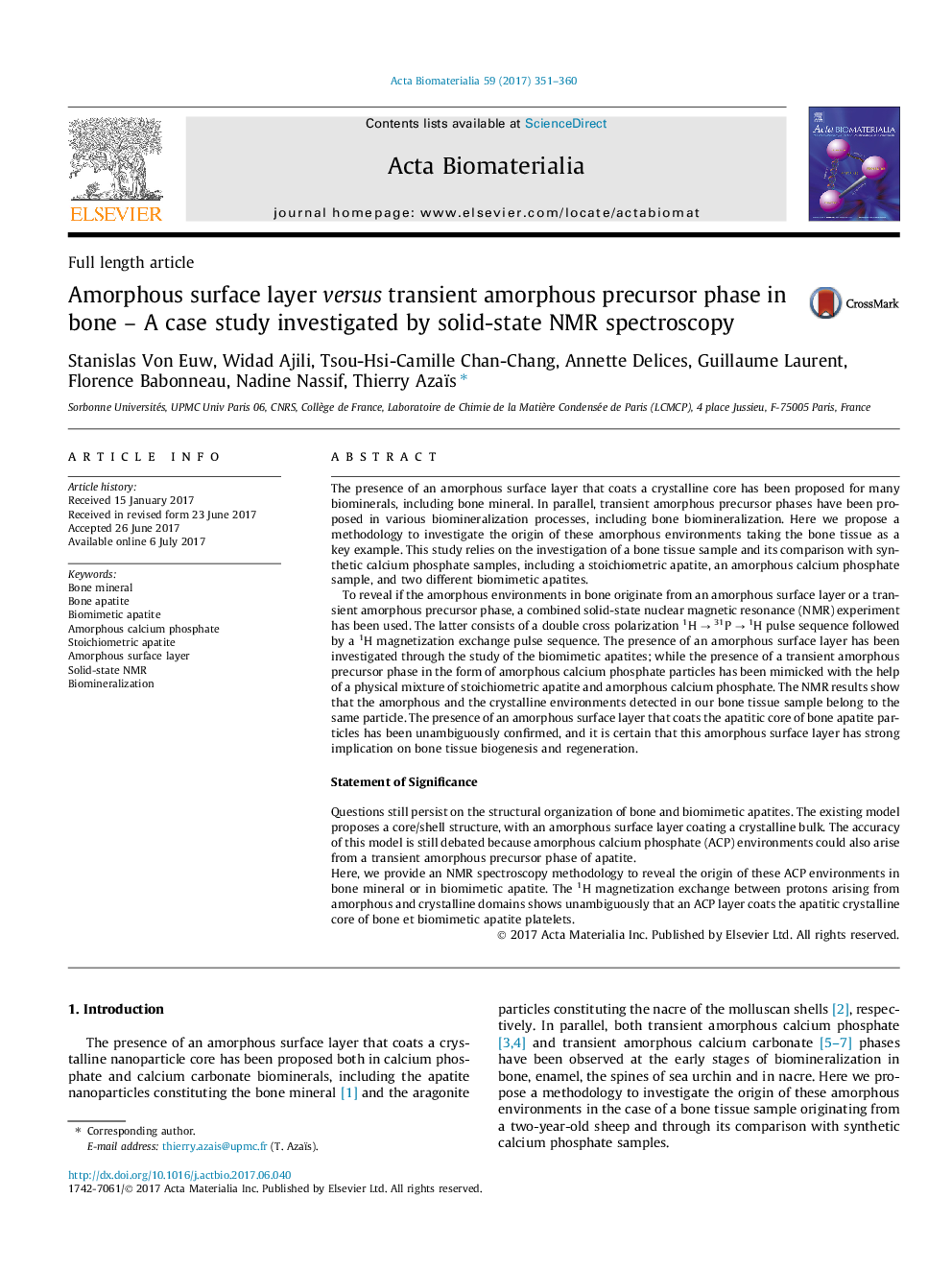| Article ID | Journal | Published Year | Pages | File Type |
|---|---|---|---|---|
| 6449093 | Acta Biomaterialia | 2017 | 10 Pages |
The presence of an amorphous surface layer that coats a crystalline core has been proposed for many biominerals, including bone mineral. In parallel, transient amorphous precursor phases have been proposed in various biomineralization processes, including bone biomineralization. Here we propose a methodology to investigate the origin of these amorphous environments taking the bone tissue as a key example. This study relies on the investigation of a bone tissue sample and its comparison with synthetic calcium phosphate samples, including a stoichiometric apatite, an amorphous calcium phosphate sample, and two different biomimetic apatites.To reveal if the amorphous environments in bone originate from an amorphous surface layer or a transient amorphous precursor phase, a combined solid-state nuclear magnetic resonance (NMR) experiment has been used. The latter consists of a double cross polarization 1H â 31P â 1H pulse sequence followed by a 1H magnetization exchange pulse sequence. The presence of an amorphous surface layer has been investigated through the study of the biomimetic apatites; while the presence of a transient amorphous precursor phase in the form of amorphous calcium phosphate particles has been mimicked with the help of a physical mixture of stoichiometric apatite and amorphous calcium phosphate. The NMR results show that the amorphous and the crystalline environments detected in our bone tissue sample belong to the same particle. The presence of an amorphous surface layer that coats the apatitic core of bone apatite particles has been unambiguously confirmed, and it is certain that this amorphous surface layer has strong implication on bone tissue biogenesis and regeneration.Statement of SignificanceQuestions still persist on the structural organization of bone and biomimetic apatites. The existing model proposes a core/shell structure, with an amorphous surface layer coating a crystalline bulk. The accuracy of this model is still debated because amorphous calcium phosphate (ACP) environments could also arise from a transient amorphous precursor phase of apatite.Here, we provide an NMR spectroscopy methodology to reveal the origin of these ACP environments in bone mineral or in biomimetic apatite. The 1H magnetization exchange between protons arising from amorphous and crystalline domains shows unambiguously that an ACP layer coats the apatitic crystalline core of bone et biomimetic apatite platelets.
Graphical abstractDownload high-res image (187KB)Download full-size image
